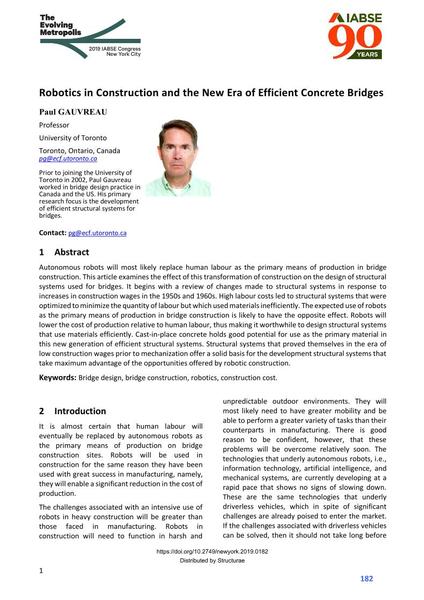Robotics in Construction and the New Era of Efficient Concrete Bridges

|
|
|||||||||||
Détails bibliographiques
| Auteur(s): |
Paul Gauvreau
(University of Toronto)
|
||||
|---|---|---|---|---|---|
| Médium: | papier de conférence | ||||
| Langue(s): | anglais | ||||
| Conférence: | IABSE Congress: The Evolving Metropolis, New York, NY, USA, 4-6 September 2019 | ||||
| Publié dans: | The Evolving Metropolis | ||||
|
|||||
| Page(s): | 182-186 | ||||
| Nombre total de pages (du PDF): | 5 | ||||
| DOI: | 10.2749/newyork.2019.0182 | ||||
| Abstrait: |
Autonomous robots will most likely replace human labour as the primary means of production in bridge construction. This article examines the effect of this transformation of construction on the design of structural systems used for bridges. It begins with a review of changes made to structural systems in response to increases in construction wages in the 1950s and 1960s. High labour costs led to structural systems that were optimized to minimize the quantity of labour but which used materials inefficiently. The expected use of robots as the primary means of production in bridge construction is likely to have the opposite effect. Robots will lower the cost of production relative to human labour, thus making it worthwhile to design structural systems that use materials efficiently. Cast-in-place concrete holds good potential for use as the primary material in this new generation of efficient structural systems. Structural systems that proved themselves in the era of low construction wages prior to mechanization offer a solid basis for the development structural systems that take maximum advantage of the opportunities offered by robotic construction. |
||||
| Mots-clé: |
construction de ponts
|
||||

